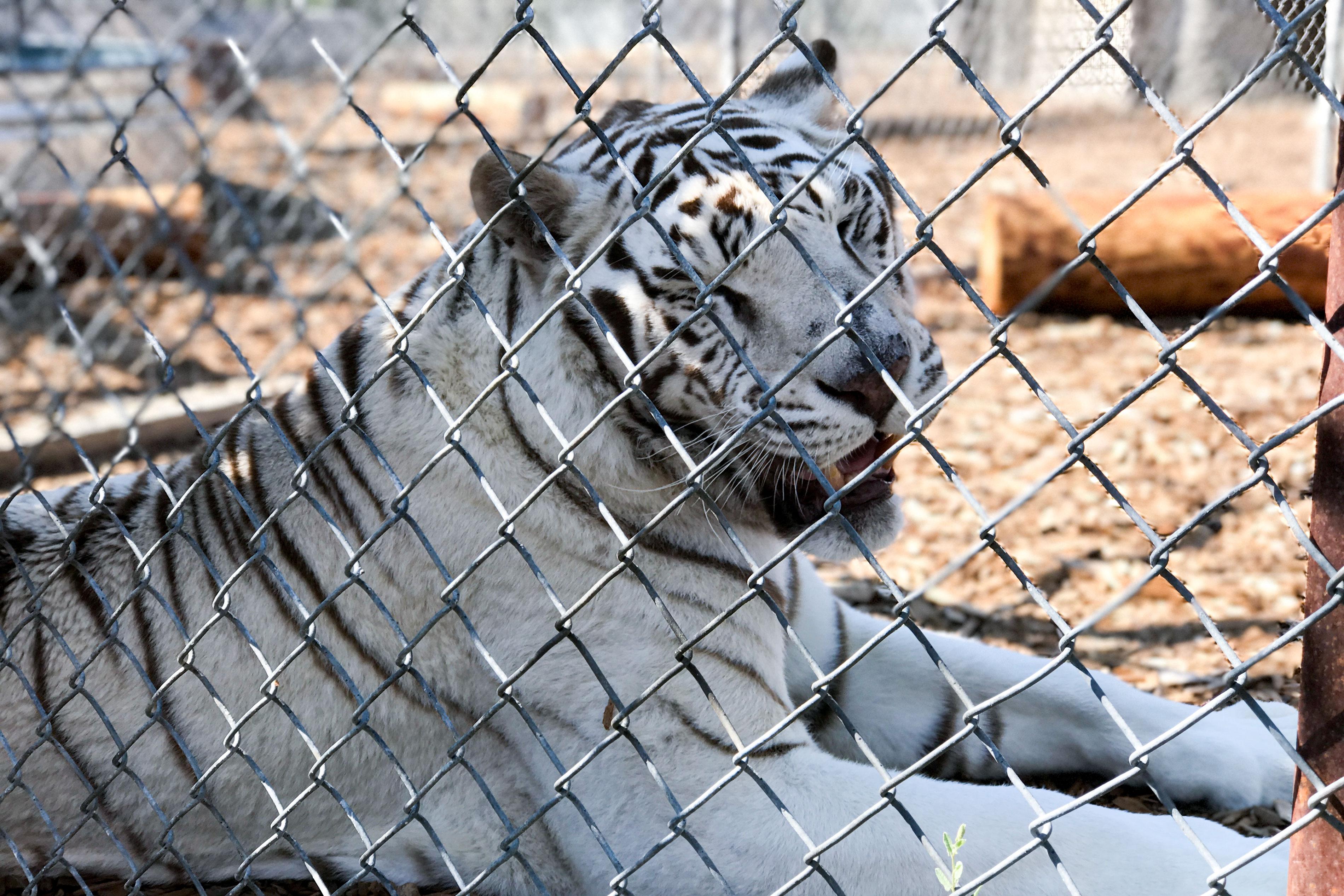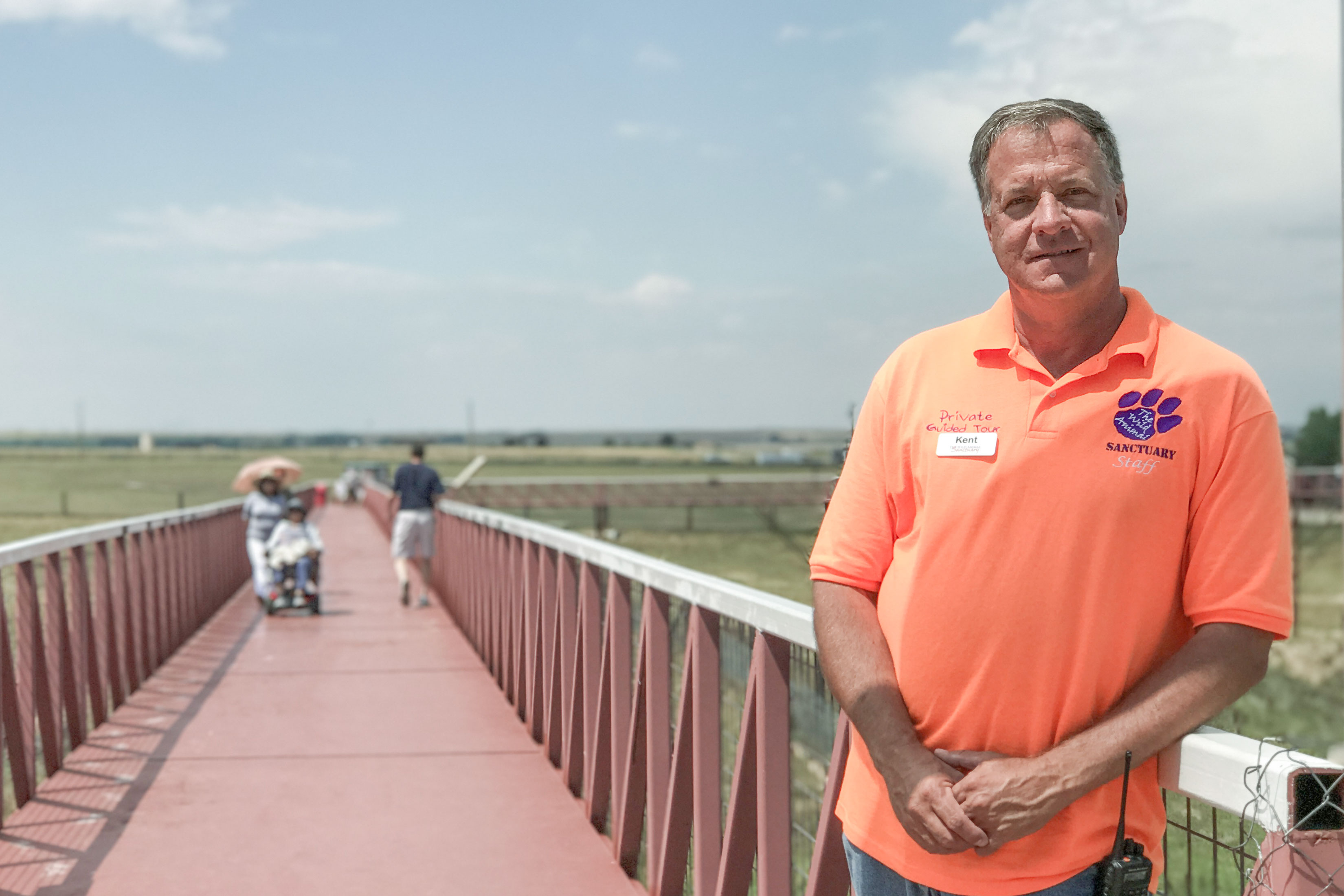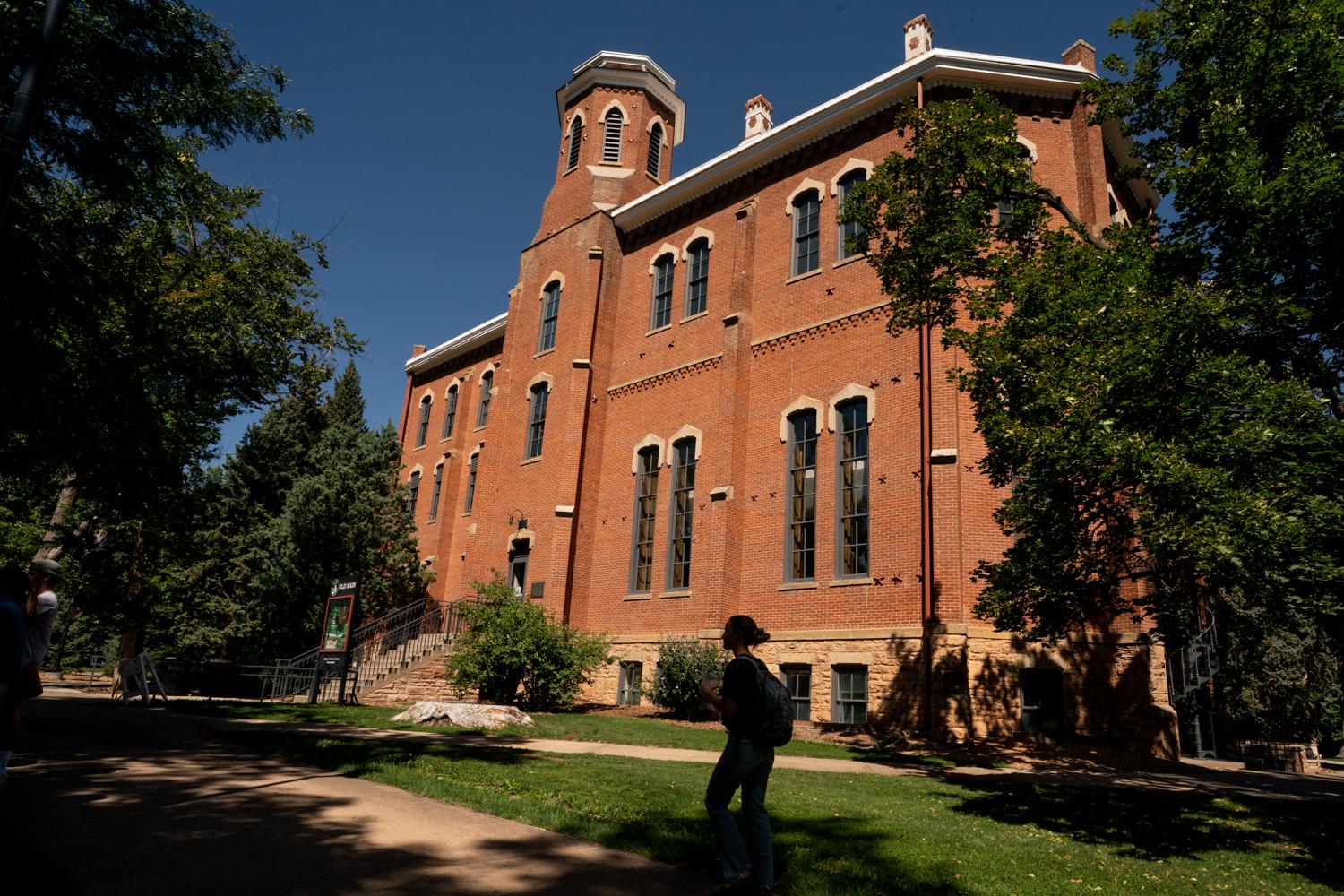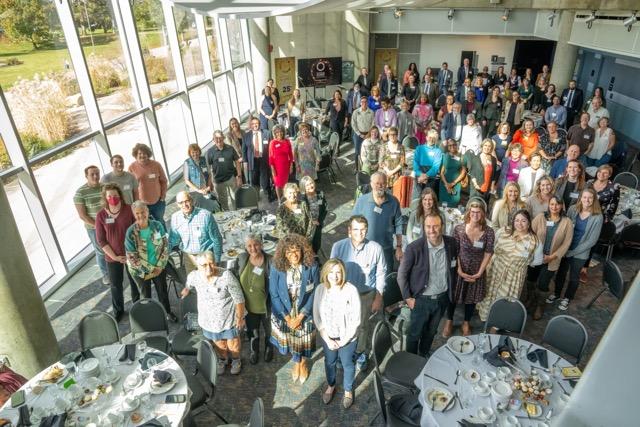

When you think lions, tigers and bears, maybe it's Oz or a certain somebody from Kansas that comes to mind. Instead try to think Keenesburg in eastern Colorado. It's home to one of the world's largest carnivore sanctuaries — 720 acres filled with animals from around the globe.
The grassy eastern plains seem very exotic when a lion roars in the distance.
The Wild Animal Sanctuary is looking into buying nearby land to nearly double its size. As states tighten their laws around exotic animal ownership, Ken Drotar, the director of the sanctuary's ambassador program, points out the need is there for more room.
In Ohio, permits are now required after a man freed dozens of large carnivores in 2011, before killing himself. Because of the change, the Wild Animal Sanctuary took in nearly 60 bears from the state in 2016.
There's also Tomara, a white tiger saved from southern Ohio. Her cage in Keenesburg is a far cry from the "wet, muddy, urine-soaked, cold enclosure" she was plucked from. Until all the animals are cleaned out of those kind of places, "sanctuaries have a much higher demand," Drotar says.

He's not kidding. Tomara's neighbors include a mountain lion named Buddy who was rescued from an Iowa mall, along with a laundry list of three black bears, five wolves, five foxes, a bobcat, a lynx, a coyote and a bengal cat.
This refuge didn't get its start saving animals from malls, garages and basements. Pat Craig, the director and founder, got the idea after taking a behind-the-scenes tour of a small zoo.
"In the back, they had a bunch of lions and tigers in tiny little cages," Craig says. "And I thought that was just really odd because you never see that from the front side."
Craig was told the animals would either find homes at other zoos or be euthanized. So, at age 19, he decided to build a rescue for exotics on his parent's farm outside of Boulder. What followed were letters to zoos across the country saying, "if you're going to euthanize something, maybe I can help."
Craig thought he'd get little to no response, "but in the first month I got over 300 responses."
Craig's safe haven grew and moved to Keenesburg in 1994, but was kept closed to the public. But he realized people needed to see the problem he calls the "captive wildlife crisis." So, in 2002, he let people in. Now nearly 200,000 visit each year.

"When we had to open to the public, it was a thing like, 'OK how are we going to do this and not take money away from the animals?'" Craig asks.
An adult admission of $30 might seem steep, but Craig says that money only pays for the basics to stay open to the public — bathrooms, insurance, and upkeep of the "Mile into the Wild" walkway that spans the property. The sanctuary also asks for a donation, which goes to the more than 450 animals. The sanctuary's yearly budget is more than $11 million, which Craig says, mostly comes from individuals all over the world.
"So now our organization travels quite often to other countries to rescue the same kind of animals," Craig says. "And at the same time the good news is, we're trying to educate those countries: look, don't go through 30 years of this problem."
The issue of captive wildlife has improved in the U.S, but has gotten worse elsewhere, Craig says. In 2015, the sanctuary hoped to take in a Peruvian circus bear named Cholita, but for reasons of poor health it didn't work out. The sanctuary has taken in zoo animals from Argentina, circus lions from Bolivia and bears from Mexico.

Erika Ortigoza Vazquez, who works with Craig to move animals from Mexico to his sanctuary, says she'll soon open a hospital to rehabilitate large animals that are often close to death.
Through a translator, Ortigoza Vazquez says the hospital is the the first step to working with the Wild Animal Sanctuary to open a large-scale refuge in Mexico. For her, it's all done in respect to the animal instincts of its patients. A lion that's been treated like a dog or a cat can then remember its animal instincts and regain the wild life that's been taken.
Ortigoza Vazquez says she's relied on Craig's expertise and technical help, and with it she has already rescued more than 100 animals.
But there are also the animals that Craig can't help.
"We take in a lot, but we probably turn away as many or more than we take in in a given year," Craig says. "And that's hard. Because, I'm actually the guy that has to say no. And I try not to put that on anyone else here."
While Pat Craig hopes to expand, he also wants to be out of business one day — part of a world where there are no more lions, tigers and bears that need to be saved.








